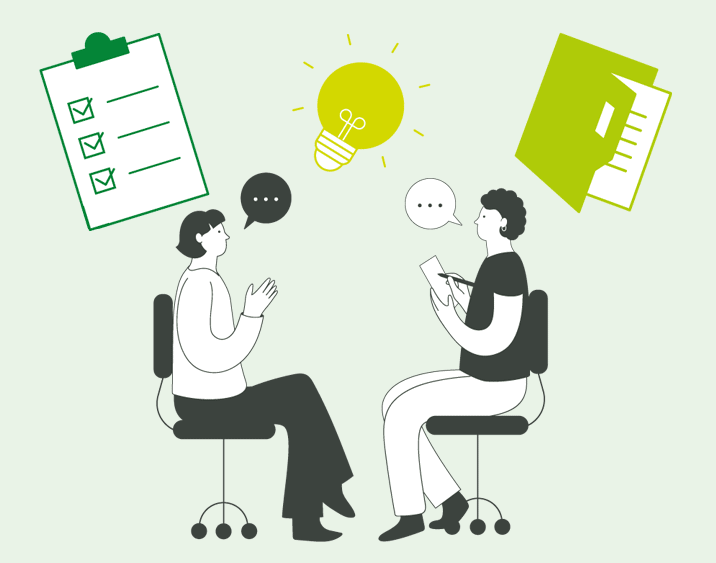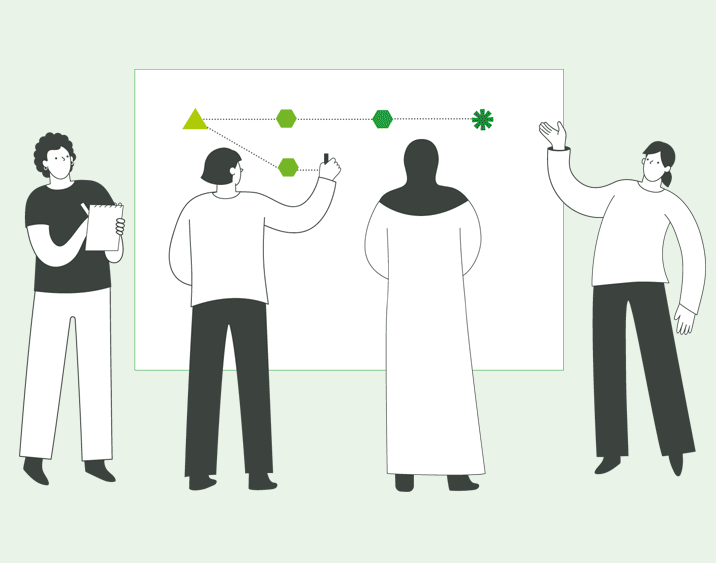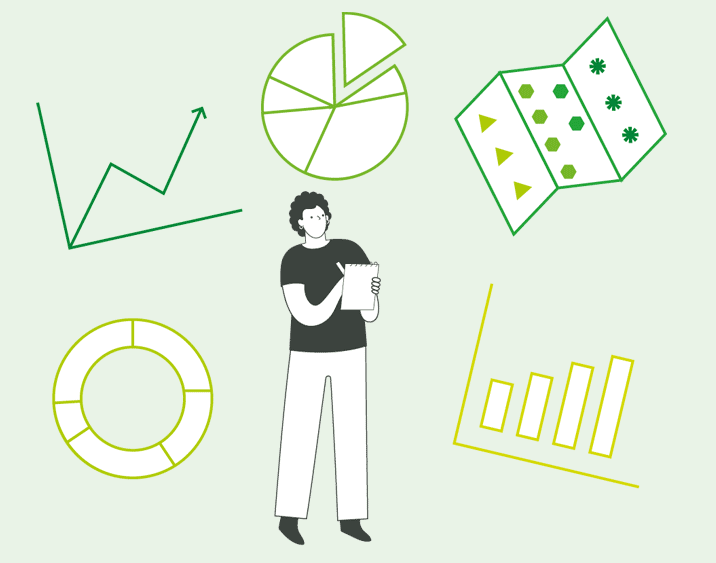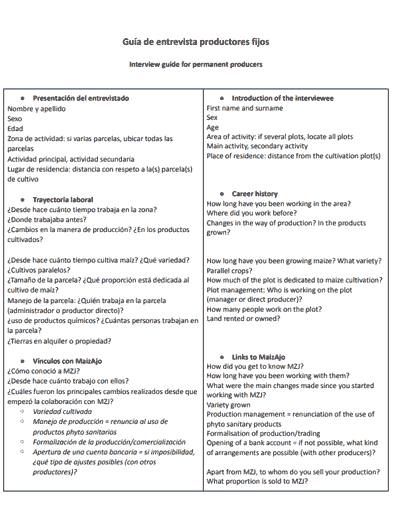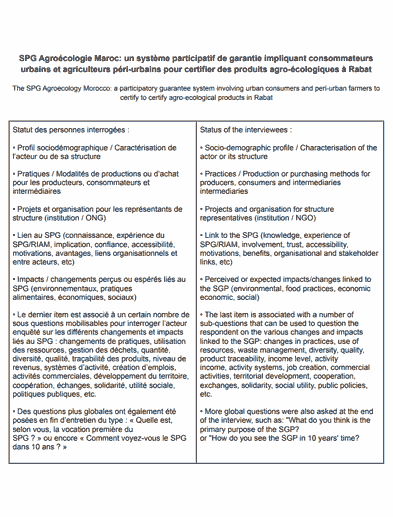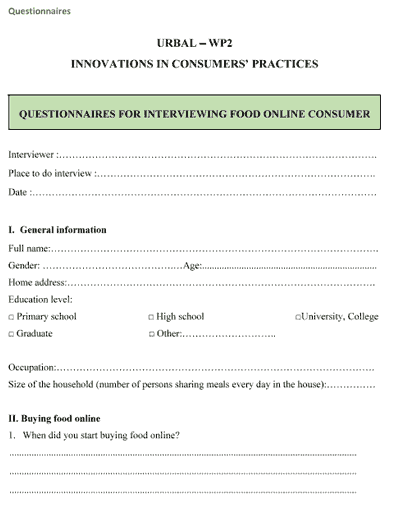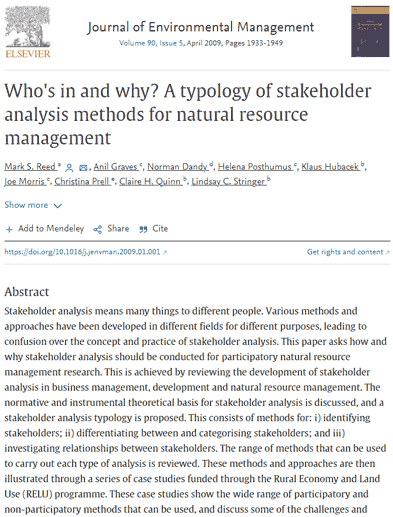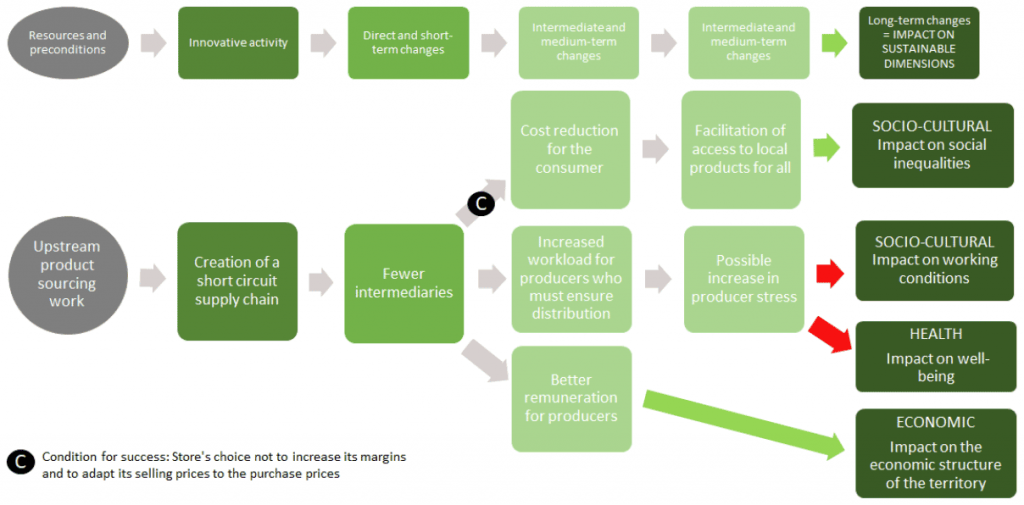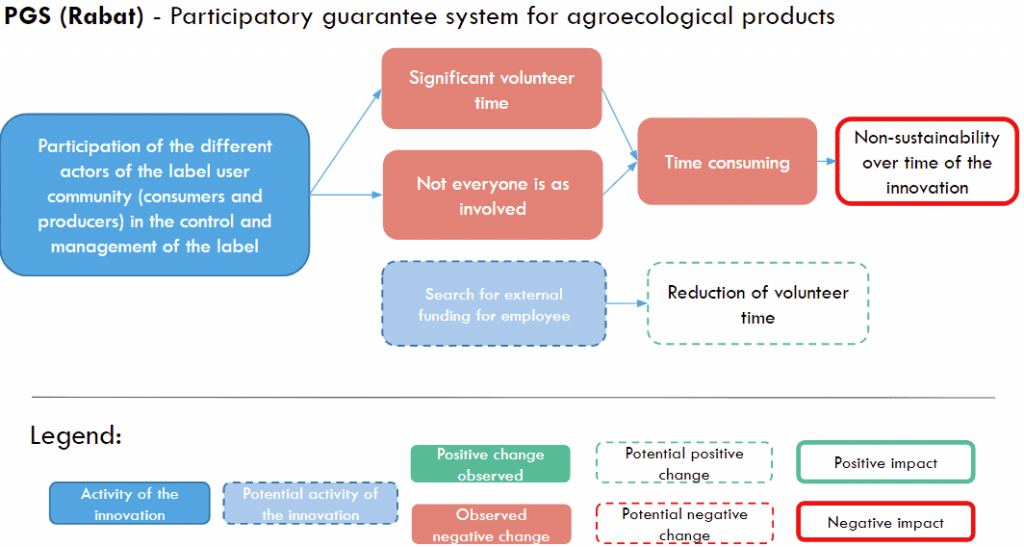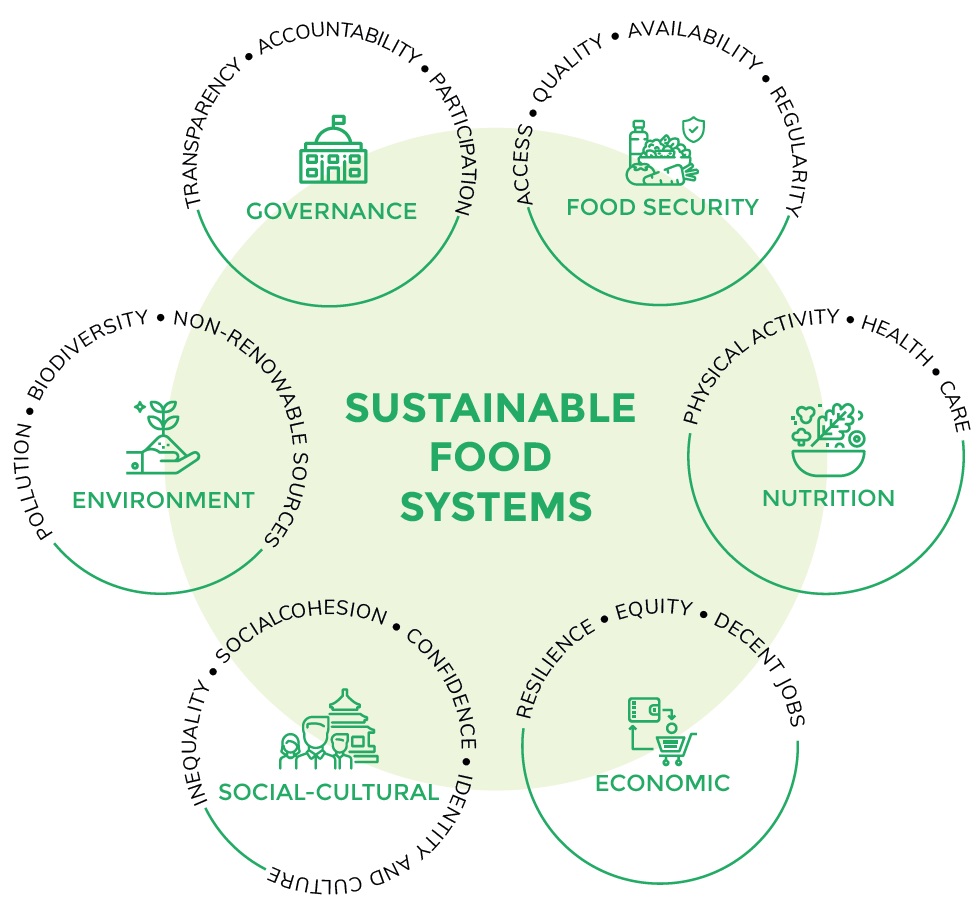
Les entretiens constituent une part importante de l’étape 1 du processus Urbal. Ils permettent de recueillir des informations directement auprès des innovateur.ice.s, des acteur.ice.s de l’innovation, des décideur.se.s politiques et des expert.e.s. Les entretiens sont l’occasion d’entendre les personnes-clés impliquées, directement ou indirectement, dans l’innovation expliquer, avec leurs propres mots, comment l’innovation contribue par ses actions à la durabilité du système alimentaire.
Quelques considérations clés à prendre en compte lors de la planification des entretiens :
- Le choix des personnes à interroger aura une incidence sur le type d’informations que vous pourrez recueillir sur l’innovation. Dans la mesure du possible, veillez à identifier les personnes à interroger parmi quatre groupes clés : les porteur.se.s de l’innovation, les acteurs et actrices associées à l’innovation, les responsables politiques, ainsi que les expert.e.s.
- Réalisez au moins 5 entretiens et idéalement pas plus de 20. Choisissez le nombre d’entretiens qui convient le mieux à votre contexte, en tenant compte des contraintes de temps et de ressources.
- Soyez attentif aux dynamiques de domination à l’œuvre dans les entretiens, en particulier lorsque les personnes interrogées sont dans une position de pouvoir moins forte que les enquêteurs ou d’autres personnes impliquées dans l’innovation. Il est très important de créer un espace sûr pour faciliter le dialogue avec les personnes interrogées.
- À la fin de chaque entretien, demandez à la personne interrogée de vous suggérer d’autres personnes à qui vous devriez parler. Vous vous assurerez ainsi d’avoir inclus tous les acteurs et actrices pertinents de l’innovation dans le processus d’entretien.
Tableau 1 : Personnes à interviewer et leur rôle
Les entretiens doivent être menés dans le respect des procédures éthiques institutionnelles/organisationnelles et de la législation locale relative à la protection de la vie privée. En Europe, les enquêteurs doivent obtenir le consentement verbal ou écrit de toutes les personnes enquêtées et fournir des informations détaillées aux participant.e.s sur la manière dont leurs propos et leurs informations personnelles seront utilisées dans le cadre du projet, et sur la manière dont toutes les informations recueillies seront conservées en toute sécurité pendant et après le projet (voir Règlement Général sur la Protection des Données (RGPD) : https://www.cnil.fr/fr/rgpd-de-quoi-parle-t-on ).
Pour obtenir ce consentement, les enquêteurs doivent faire preuve de clarté quant à leurs intentions et instaurer un climat de confiance avec les participant.e.s, afin qu’ils comprennent parfaitement le projet et leur rôle.
Les entretiens pourront explorer différentes questions ou différents sujets en fonction du rôle des personnes interrogées. Voici quelques questions recommandées pour lancer le processus :

Tableau 2 : exemples de questions à poser
N’oubliez pas de conserver en toute sécurité les données collectées lors des entretiens car vous en aurez besoin pour l’étape 2.
Focus of questions, suggested topics:
Meeting the interviewee-
Please introduce yourself
Focus of questions, suggested topics:
Interviewee’s role and link to the innovation including practices, interactions with other stakeholders-
What is your role as part of the innovation initiative? What are your activities and practices related to the innovation? Who do you interact with?
Focus of questions, suggested topics:
Perceived or expected impacts/changes related to the innovation-
What has changed and/or been impacted in the food system by this innovation? Have ideas and/or practices about food changed because of this innovation?What has changed for the environment, the people, health, economy, governance?
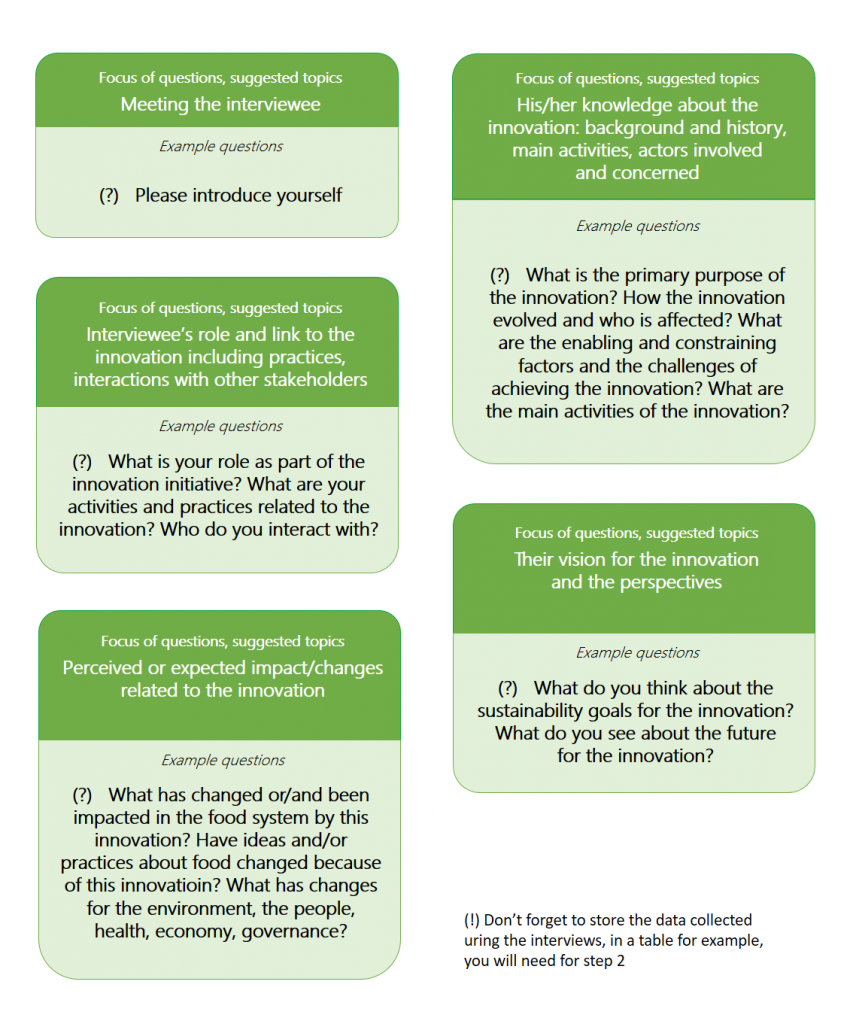
Focus of questions, suggested topics:
His/her knowledge about the innovation: background and history, main activities, actors involved and concerned-
What is the primary purpose of the innovation? How has the innovation evolved and who is affected? What are the enabling and constraining factors and the challenges of achieving the innovation? What are the main activities of the innovation?
Focus of questions, suggested topics:
Their vision for the innovation and the perspectives-
What do you think about the sustainability goals for the innovation? What do you see as the future for the innovation?
Don’t forget to store the data collected during the interviews, in a table for example, you will need it for step 2.
Ressources
Innovators
-
People who developed the initial innovation concept
-
People who are involved in the innovation to date
Innovation actors
-
Actors directly or indirectly related to the innovation
-
Such as consumers, clients, beneficiaries, providers, producers, employees etc.
Policy makers and/or funders as appropriate
-
Interest in and capacity to enable or impede innovation through policy, programs, funding, tools and other supports
Experts
-
You may also want to include sustainability experts to provide context for the innovation and draw on insights from other research to inform case description.
-
They are not necessarily scientists but people with long experience and/or professional knowledge.
Rainbow diagram for classifying stakeholders according to the degree they can affect or be affected by a problem or action (from: Chevalier and Buckles, 2008). dans la publi de Reed at al.
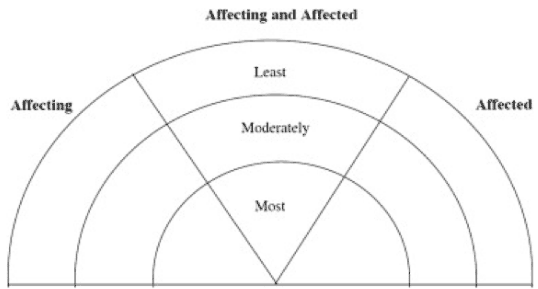
Interest–influence matrix for Integrated Management of Floodplains RELU Project showing stakeholders with property rights.
Considerations
- Roles of interviewees and the power dynamics. It is very important to create a safe space to facilitate dialogue with interviewees.
- Ask interviewees to suggest additional key informants.
- How many? We suggest between at least 5 and ideally more than 20 interviewees. Based on the guidelines, you need to use your judgment and go with the number that makes sense in your particular situation.




